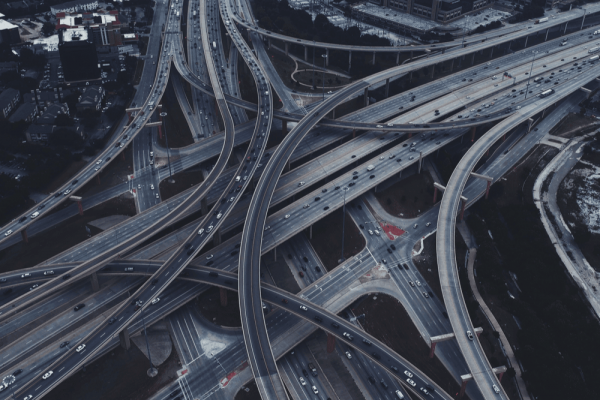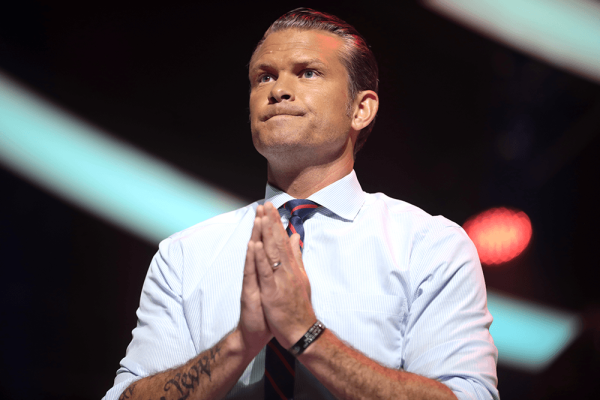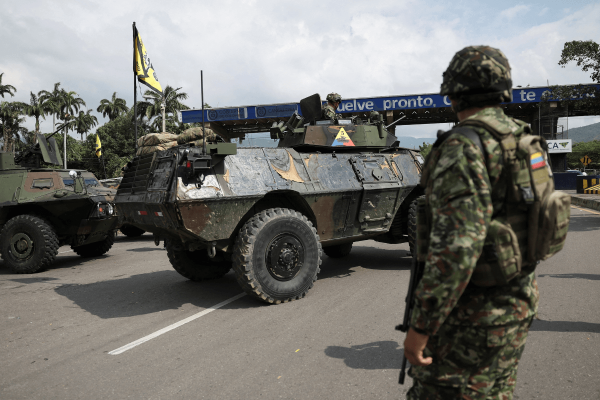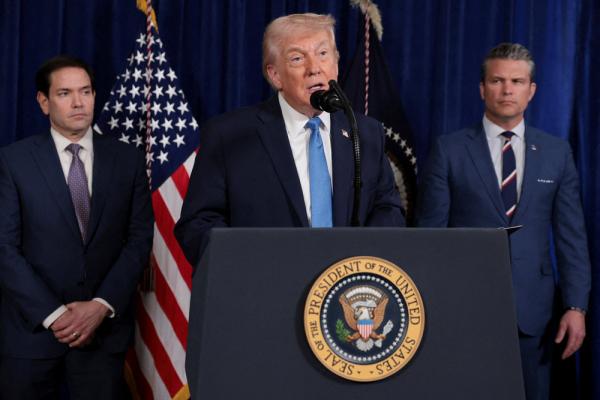Earlier this month, Secretary of Transportation Pete Buttigieg made headlines by announcing that the recently-passed $1 trillion federal infrastructure bill will be used in part to address racial inequities in U.S. highway design. “If a highway was built for the purpose of dividing a white and a Black neighborhood, or if an underpass was constructed such that a bus carrying mostly Black and Puerto Rican kids to a beach … in New York was designed too low for it to pass by, that obviously reflects racism that went into those design choices,” he said.
A number of Americans were confused — how can concrete and paint be racist? But Buttigieg is correct: Highways and bridges are examples of structural racism literally built into the American cityscape. Reconstructing more equitable cities will require prophetic imagination and real, political solutions. They will vary from city to city, suburb to suburb. So if you’re looking for a place to start, look in your own neighborhood.
Redlines, Highways, and Suburbs
I live in the Dallas-Fort Worth (DFW) metroplex. After enslaved Texans learned of their emancipation, many settled in “freedmen's towns” across Dallas. One of the largest, known first as Freedman's Town, then North Dallas, boasted a population of more than 500 Black Americans and was situated about two miles northeast of downtown. By the early 20th century, largely due to federal, state, and local laws preventing Black residents from living anywhere else in the city, North Dallas faced overcrowding, poverty, and deterioration.
During this time, white Dallas leaders worked quietly to unify a city whose geography was sprawling and haphazard. In 1911, George Bannerman Dealey, operator of the Dallas Morning News, brought in famed landscape architect George Kessler. Together, they conceived of a network of boulevards and parks because, “if the majority of people are to have the full benefit of outdoor recreation, parks and playgrounds must be provided within easy walking distance of their homes.” But as Collin Yarbrough writes in Paved a Way, the implementation of Kessler’s plan revealed that when these city planners said “the majority of people,” they only meant only the white residents of Dallas.
Central Expressway was the centerpiece of Kessler’s plan. Construction began in the 1940s, and the massive highway cut directly through the heart of North Dallas, paving over a freedmen’s cemetery. The concrete automobile pipeline designed to connect white Dallas neighborhoods literally paved over bodies of formerly enslaved Black citizens.
Other highways in Dallas like Interstate-30 and Interstate-35 run directly through red areas on the Dallas redlining map. Redlining refers to a practice implemented by banks beginning in the 1930s using color-coded maps to signal which neighborhoods made for “safe” approvals for housing loans. White neighborhoods were coded green, while Black neighborhoods were coded red. When the Federal-Aid Highway Act, signed by President Dwight Eisenhower into law in 1956, began implementation in Dallas, city planners ensured the new highways carefully avoided green-coded neighborhoods while bisecting those coded red. The new interstate highways divided communities of color, which were already suffering a lack of opportunity. Now even the roads separated them from each other, hurt their property values, and made it harder for them — and their children — to access the public infrastructures of their own cities.
All over the United States, highways also created a new reality for white Americans: the suburb. With highways creating fast access to city centers (again, by paving over and bisecting communities of color), white Americans no longer had to live near their jobs.
Head northeast out of Dallas and you’ll hit Garland. Two generations ago, cities like Garland experienced rapid growth as white Dallasites fled the city in the post-WWII housing boom. Garland's fastest population growth decade was the 1940s (373 percent), followed by the 1950s (264 percent). By comparison, from 2010 to 2018, the population grew less than 7 percent.
A generation later, as people of color moved from Dallas to that first ring of suburbs, white families fled further. Keep heading northeast and you’ll get to Rowlett, where I pastor. Rowlett is one of the suburbs that marks the second wave of white flight in DFW's continuing growth. I came to Rowlett seven years ago, just after the city expanded its public transportation to make Rowlett more easily accessible to Dallas. And just like that, our little town was suddenly a suburb — much more accessible to the big city. In 2000, Rowlett was 81.8 percent white. As of the 2020 census, that percentage has dropped below 70 percent.
Many white Dallasites are engaging in a third wave of white flight to communities like Fate and Wylie (which, for several years, was one of the fastest-growing cities per capita in the United States). Others are gentrifying historically Black and Latinx neighborhoods. Dallas, as is the case with every U.S. city, is rewriting our history as we live it. We’re paving over, tearing down, and replacing the past. In the process, we obscure the injustices that formed our past and continue to shape our present.
A faithful response to racist infrastructure
How should persons of faith respond to the reality of our racist infrastructure? What responsibility do suburban churches — like the one I pastor, planted in a bastion of white flight — have to the cities where we’re planted?
1. Turn IN to the city, not OUT
When I first came to pastor Catalyst Church, a number of members were not only planning to move (out of Rowlett to those third-ring suburbs), but also dreaming about how Catalyst could follow them. They envisioned planting satellite congregations in those far-flung towns-turned-suburbs, swallowed by the metroplex sprawl.
In growing cities, white flight begets church flight. Instead of fleeing, we can turn toward our cities and recognize the good work God is already doing – often through Black and Latinx churches – in these spaces. Instead of imitating suburban, satellite-forming megachurch pastors, we can seek to learn from pastors like Jonathan Brooks or José Humphreys, whose long-term faithful witness to their cities is an antidote to the pattern of white flight that drives us further away from our neighbors. Both pastors – in Chicago and East Harlem, respectively – have steadfastly refused to leave their cities, instead leading their churches to love their neighborhoods and work for justice.
2. Know your history
The history of disenfranchisement of Americans of color has been hidden in legal codes and paved over by city plans, but some of our racist history is inscribed in plain sight. Tarrant and Denton are two counties outside of Dallas. They are named for General Edward H. Tarrant and Captain John B. Denton, who killed or removed Caddo, Wichita, Waco, Creek, and other Indigenous nations settled in the area. Learn the stories behind the names of the neighborhoods and streets and buildings in your city, and find the communities, the museums, and the schools that are preserving the stories of those who never had a seat on the city councils, those never consulted during the city planning.
Richard Rothstein's The Color of Law is a good starting point. If you're fortunate, you may live in a city where someone has done much of this difficult work. I'm grateful to Collin Yarbrough for his book Paved a Way. Yarbrough is a pipeline engineer-turned-seminarian who brought his prodigious skills to bear outlining the realities of Dallas' racist infrastructure. As he observes in his introduction, “A just and equitable city cannot be created with one highway removal, one policy change, or one grassroots campaign. It has taken many decades, policies, and actions to get to this point and will take many more to repair it.”
Re-narrating the history of our cities is a prophetic job. It’s not easy, and it’s not something that can — or should — be done alone. Working together as a church, or even as a network of churches, will amplify our prophetic story.
3. Stand with the most vulnerable
Despite 20 years of concerted effort by some evangelical leaders to diversify churches, the multiethnic church movement has largely failed. Why? Because white churchgoers don’t want to play ball. When I pastored in Beavercreek, a suburb of Dayton, Ohio, the public transit system (RTA) planned to install three bus stops in our suburb. The Beavercreek City Council voted unanimously to refuse the bus stops and was subsequently sued by a civil rights group (Beavercreek lost, and now has bus stops). I first heard about the issue after the city council’s vote, where three Black pastors from Dayton had showed up to advocate for the bus stops. No pastors from Beavercreek were present; though the church I worked at was the largest church in Beavercreek, none of our staff even knew it was an issue. We failed to attend to the issues that affected the most vulnerable in our city, issues tied directly to our infrastructure.
Churches that want to mobilize to heal the wounds caused by centuries of structural injustices must begin by identifying and living in solidarity with the most vulnerable populations in our communities. If largely white churches can't confess that Black Lives Matter, for instance, it’s unlikely that these same churches will be ready to show up to city council meetings to do the unglamorous work of advocacy for those same lives. In cities all over America, churches of color have lived the reality of infrastructural racism. They are frequently the last remaining sign of their community’s once-vibrant history. White churches need to learn from these faithful resisters. We need to hear their stories, receive their faithful witness, and allow them to lead us in working for more just cities.
Got something to say about what you're reading? We value your feedback!






